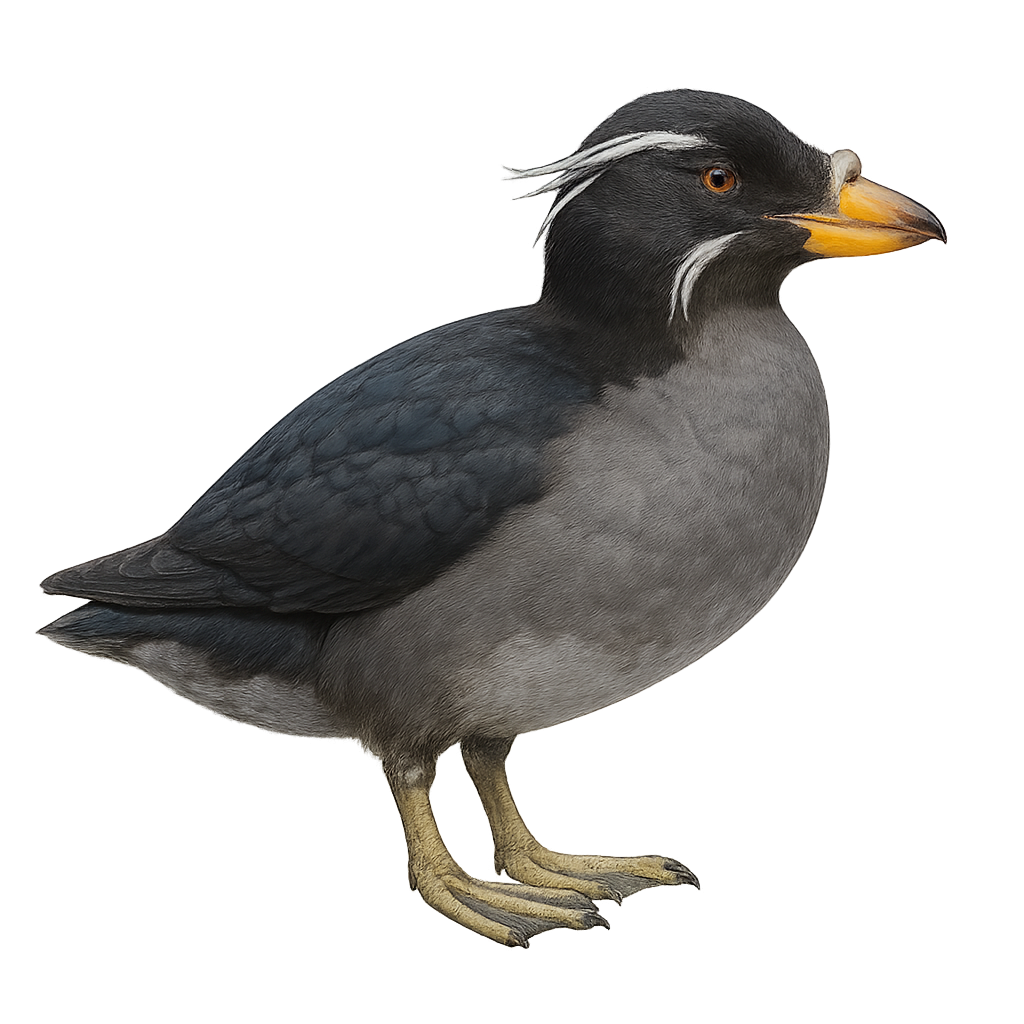Your wildlife photography guide.
Explore the rhinoceros auklet in detail, study its behavior, prepare your shots.
Where to observe and photograph the rhinoceros auklet in the wild
Learn where and when to spot the rhinoceros auklet in the wild, how to identify the species based on distinctive features, and what natural environments it inhabits. The WildlifePhotographer app offers tailored photography tips that reflect the rhinoceros auklet’s behavior, helping you capture better wildlife images. Explore the full species profile for key information including description, habitat, active periods, and approach techniques.
Rhinoceros Auklet
Scientific name: Cerorhinca monocerata

IUCN Status: Least Concern
Family: ALCIDAE
Group: Birds
Sensitivity to human approach: Suspicious
Minimum approach distance: 10 m
Courtship display: March to June
Incubation: 45 jours
Hatchings: May to August
Habitat:
Coastal waters, rocky islands
Activity period :
Primarily active during the day, with peak activity in the morning and late afternoon.
Identification and description:
The Rhinoceros Auklet, or Cerorhinca monocerata, is a medium-sized seabird belonging to the Alcidae family. It is recognizable by its thick, colorful beak adorned with a horn-like extension, giving it its name. This bird features dark gray plumage on its back and white on its belly, with white-ringed eyes. It primarily inhabits the coastal waters of the North Pacific, from California to Japan. The Rhinoceros Auklet is an excellent diver, capable of descending several tens of meters to capture fish and invertebrates. It nests in colonies on rocky islands, digging burrows to lay a single egg. Although its conservation status is currently of least concern, it remains vulnerable to human disturbances and climate change.
Recommended lens:
400mm – adjust based on distance, desired framing (portrait or habitat), and approach conditions.
Photography tips:
To photograph the Rhinoceros Auklet, it is advisable to use a telephoto lens of at least 400 mm to capture detailed images without disturbing the bird. The best opportunities arise at dawn or dusk when the bird is active. Opt for cloudy days to avoid harsh shadows and use a tripod to stabilize your camera. Be patient and discreet to avoid scaring the birds, and always respect the recommended safety distance of 10 m.
The WildlifePhotographer App is coming soon!
Be the first to explore the best nature spots, track rutting seasons, log your observations, and observe more wildlife.
Already 1 429 wildlife lovers subscribed worldwide

